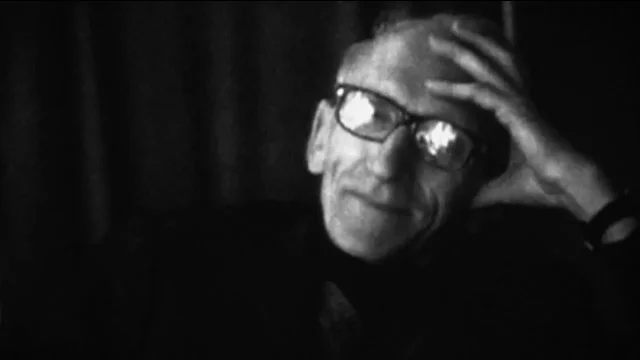Discover the literary project of Roger Laporte and his engagement with Maurice Blanchot’s concept of the neutral—biography, voice, and the desire to write beyond genre and communication.
Table of Contents
- 1. Blanchot’s Language Beyond Genre
- 2. Roger Laporte and the Influence of Blanchot
- 3. Early Destructions: A Life of Abandonment
- 4. Three “Plumes”: The Categories of Laporte’s Writing
- 5. A Critical Writer Rooted in Friendship
- 6. The Neutral: A Force Against Unity
- 7. Refusing Interviews, Writing in Silence
- 8. Writing Beyond Communication
- 9. The “Biographical Network”
- 10. Desire to Write: The Engine of Criticism
- 11. Laporte’s Style: Precision, Elegance, Movement
- 12. Voice and Musicality in Laporte
- 13. A Tapestry of Voices
- 14. Critical Writing as Variation
“Writing does not seek to communicate—it seeks to exist.”
— Maurice Blanchot
Blanchot’s Language Beyond Genre
In 1966, the journal Critique published an article titled “Louis Le Nom Le Maître”, praising Maurice Blanchot’s literary innovation. Blanchot’s writing surpassed realism and psychology. He forged a new kind of text—neither novel nor narrative—built upon neutrality, silence, and absence.
Roger Laporte and the Influence of Blanchot
Roger Laporte’s entire literary project can be read as an echo of Blanchot’s influence. His work reflects Blanchot’s notion of writing as a neutral space, neither personal confession nor structured narrative. Laporte’s writings—especially after 2009—gravitated toward a biographical form not to tell a life, but to trace the desire that drives writing itself.
Note:
Laporte didn’t mimic Blanchot; he extended Blanchot’s silence into a personal poetics of reflection.
Early Destructions: A Life of Abandonment
Laporte wrote his first novel, Genèse d’un rendement, between 1948 and 1953—but later destroyed it. Only fragments survive. This act of self-erasure marked a pattern: Laporte often suppressed or rewrote his own published works, viewing them as incomplete gestures rather than finished products.
Three “Plumes”: The Categories of Laporte’s Writing
Laporte’s work can be divided into three threads or “plumes”:
- Fictional texts that resist traditional categorization
- Critical writings and essays on authors like Bataille, Artaud, and Barthes
- Biographical reflections, blending personal experience with literary analysis
A Critical Writer Rooted in Friendship
Laporte’s critical writings were more than analysis. They were intimate conversations with the authors who shaped his desire to write. His essay Une passion, dedicated to Blanchot, and Bief, written for Derrida, are testaments to this intellectual friendship.
Quote:
“I write not about the author, but toward him—as if following the shadow of his desire to write.”
The Neutral: A Force Against Unity
Blanchot’s concept of the neutral—a refusal of synthesis, logic, or dialectic—became central to Laporte’s poetics. In his hands, writing moves toward absence, toward the unspeakable that remains just out of reach.
Example:
Laporte’s writing avoids conclusions. It opens, dissolves, and reopens thought in motion.
Refusing Interviews, Writing in Silence
Laporte never gave interviews. His refusal wasn’t arrogance—it was fidelity to a belief: that writing must remain inseparable from how it comes into being. Any explanation, he felt, would falsify the process.
Note:
His silence was not withdrawal—it was a form of radical openness.
Writing Beyond Communication
For both Blanchot and Laporte, writing wasn’t about transmission. It wasn’t a message for a receiver. Instead, writing stood “outside language,” untethered from direct communication.
The “Biographical Network”
Laporte didn’t write about himself in isolation. His biography is entangled with those of others: Blanchot, Derrida, Barthes. These were not mere references—they were figures absorbed into the voice of his own writing.
Desire to Write: The Engine of Criticism
Laporte was not interested in interpreting texts. What moved him was the desire to write that he discovered in others. This desire, he said, was both a mirror and a provocation—leading him to supplement, rival, or rewrite the original text.
Laporte’s Style: Precision, Elegance, Movement
His prose is marked by a balance of clarity and tension—elegant yet unsettled, always probing the limits of the literary. He embraced the modern notion of “text” as a space where meaning flickers, seduces, and escapes.
Voice and Musicality in Laporte
Laporte’s writing contains a subtle musicality, a voice that avoids resolution. Like Chopin or Mozart—whom he admired—his prose listens for something just beyond language: the movement, the hesitation, the loss.
A Tapestry of Voices
In Laporte, we don’t read a single author—we hear a chorus. Blanchot, Barthes, Derrida: all are present, not in citation, but in resonance. This interwoven structure is what he called the “biographical network.”
Critical Writing as Variation
His essay collection Variations on a Biographical Theme reflects this method. In writings on Kafka, Blanchot, and Artaud, Laporte offers not analysis, but variation—returning again and again to the same desire: to write the writing of another.
